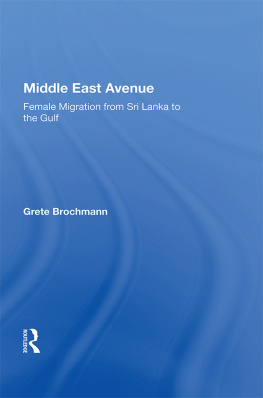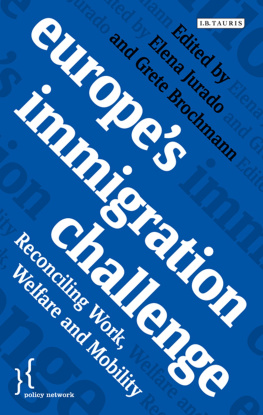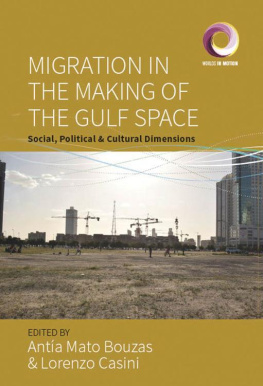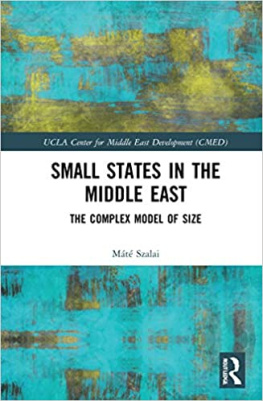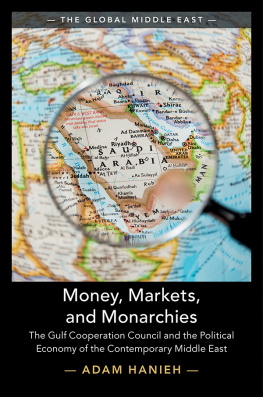Middle East Avenue
First published 1993 by Westview Press
Published 2018 by Routledge
52 Vanderbilt Avenue, New York, NY 10017
2 Park Square, Milton Park, Abingdon, Oxon OX14 4RN
Routledge is an imprint of the Taylor & Francis Group, an informa business
Copyright 1993 by Taylor & Francis
All rights reserved. No part of this book may be reprinted or reproduced or utilised in any form or by any electronic, mechanical, or other means, now known or hereafter invented, including photocopying and recording, or in any information storage or retrieval system, without permission in writing from the publishers.
Notice:
Product or corporate names may be trademarks or registered trademarks, and are used only for identification and explanation without intent to infringe.
Library of Congress Cataloging-in-Publication Data
Brochmann, Grete.
Middle East avenue : female migration from Sri Lanka to the Gulf /
Grete Brochmann.
p. cm.
Includes bibliographical references and index.
ISBN 0-8133-8617-9
1. Alien labor, Sri LlnkanPersian Gulf Region. 2. Women alien
laborPersian Gulf Region. 3. WomenSri Lanka I. Title.
HD8662.B761993
331.654930536082dc20
92-20487
CIP
ISBN 13: 978-0-367-01149-9 (hbk)
The work on this book has been facilitated by generous support from a number of individuals and institutions. I begin with the numerous women whom I interviewed during the fieldwork in Sri Lanka in 19851986. These women and their families readily accepted my invasion of their privacy and showed a great deal of tolerance to all my strange questions. I also want to thank the various informants I used in the communities of investigation, who put their comprehensive knowledge about conditions in the areas at my disposal. I particularly want to mention Karuna in the Shanty Canal area, who offered eminent support both as an informant and as a source of inspiration.
I furthermore want to thank research colleagues attached to the Centre for Womens Research (CENWOR), the International Centre for Ethnic Studies (ICES) and the Institute of Sociology at the University of Colombo. Special thanks in this respect go to the Leiden-Colombo Research Team and Programme Director Frank Eelens, who generously opened their voluminous files to me and took part in numerous discussions on research strategies and data interpretation. Officials working with the Norwegian Aid Agency (NORAD) in Colombo, the Planning Unit in the Integrated Rural Development Programme (IRDP) in Hambantota and Redd Barna in Colombo also offered most valuable assistance.
In acknowledging individuals in Norway, I start with my colleague at the Peace Research Institute of Oslo (PRIO), Kumar Rupesinghe, who gave me the idea of developing a research project based on the Middle East migration and subsequently shared his contacts in Sri Lanka with me.
Later in the process my two supervisors, Fredrik Engelstad and Gunnar Srb, provided invaluable challenges and stimulation. With their different but complementary approaches, they provided advice in the realms of sociology and development studies.
My husband, Jon Erik Dlvik, has also given substantial advice throughout the process and shared moments of frustration and joy.
I am thankful to each and every one.
Financial support has been provided by the Norwegian Council for Science and the Humanities (NAVF). A three-year full-time scholarship and various travel grants have made the project possible on the material side. Apart from the fieldwork, participation at a number of international seminars and conferences has been financially supported by NAVF. This aid has been most valuable to the project and to the learning process at large.
Last, I want to thank the Peace Research Institute of Oslo, where I have been affiliated for the major part of the project period. Institutional facilities and good colleagues have been highly appreciated. I have spent the last period of writing at the Institute for Social Research (ISF), Oslo, where the facilities have been equally good.
Crete Brochmann
Oslo, Norway
In recent decades, the international migration of labour has become increasingly widespread throughout the world. Expanding international trade in labour has developed into a significant feature of the world economy. For many developing countries remittances from citizens temporarily working abroad has become a major source of foreign exchange and has contributed to the reduction of trade deficits.
Alongside the systematic expansion in labour trade, the social issues involved have been increasingly visible. Large numbers of people leave home and family for lengthy stays abroad. Not only is this a dramatic event for the individual, it also affects social relations, culture, the organization of production and consumption patterns in the migrants local communities.
Basically labour migration is a dynamic social process that can be analyzed on different levels: from the lowest levelthe individual actor, the migrantto the highestthe international societywith numerous gradations in between. The aggregated movements of the individuals involved affect the other levels, and societal structures create and maintain forces that act upon the individual migrant. The interplay of these elements determines the nature and extent of migration.
This book deals with how international macrostructures impinge on the lives of poor people in small communities in a developing countryhow the big world out there enters remote areas and becomes familiar in an unprecedented way while imposing change in the daily lives of the inhabitants.
Studies of the most common type of international migrationtemporary contract circulationhave generally been confined to male migration. A man obtains a short-term work contract in another country, leaving the rest of his family behind. The role of the woman in this context is to maintain the household and perhaps cultivate the land or engage in other economic activities while the man is away. Although women thus form a part of the whole system of migration, they are seldom studied as active participants in it.
In this study I look at a type of labour migration in which the gender component is turned upside down, in which the woman is the main actor who leaves hearth and home in search of work in distant lands. It is the woman who transcends the boundaries of her community, challenging structural and traditional limitations attached to sex and class.
The home country is Sri Lanka, which sends thousands of migrants to work as housemaids in Arab homes in the Gulf area on two-year contracts. The majority of these maids are married; they leave their husbands and children behind in their home communities.
What makes these young women sell their labour power to Arab households, thousands of miles from home, depriving themselves of the possibility of being close to their own children as they grow up? These women have rarely traveled outside their own domain prior to the Gulf move and few have ever traveled by plane. What consequences does this practice have on their livesas individuals and as members of households, communities and society at large?
The answers to these questions in the broadest sense must be approached on different levels and from different angles. Labour migration must be understood in the context of the economic and social development that has made the migration possible or, rather, has pushed it forward. In other words, the structural dimension of female migration must be outlined in order to explain the position of women in the dynamics of contract labour. The process of labour migration in general is inherently linked to changes in the socioeconomic context in which the moving takes place. Therefore, a comprehensive analysis of causes and consequences of labour migration should approach the phenomenon as a social process in which cultural and politicalas well as economicfactors are central.

